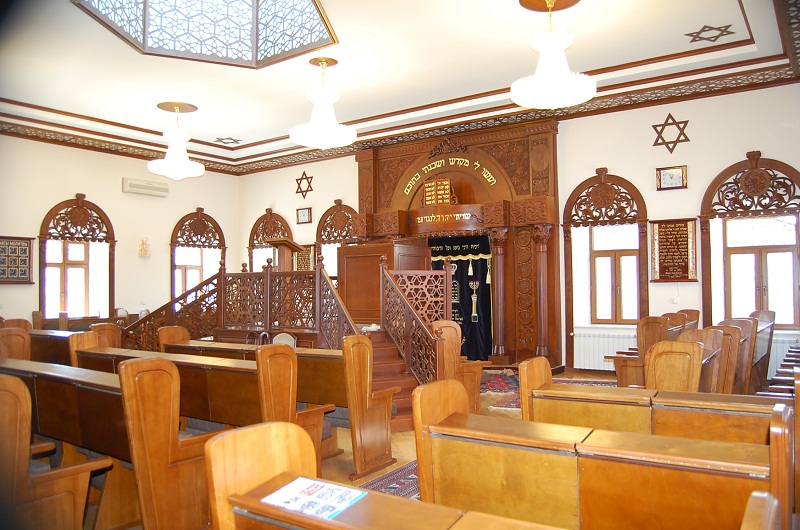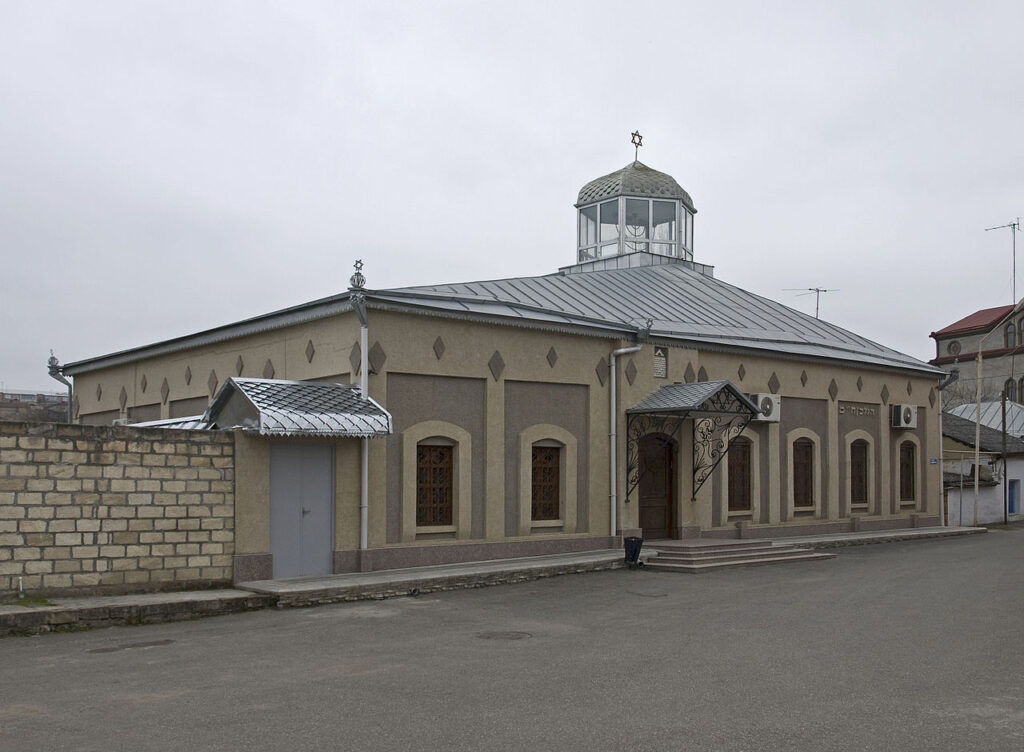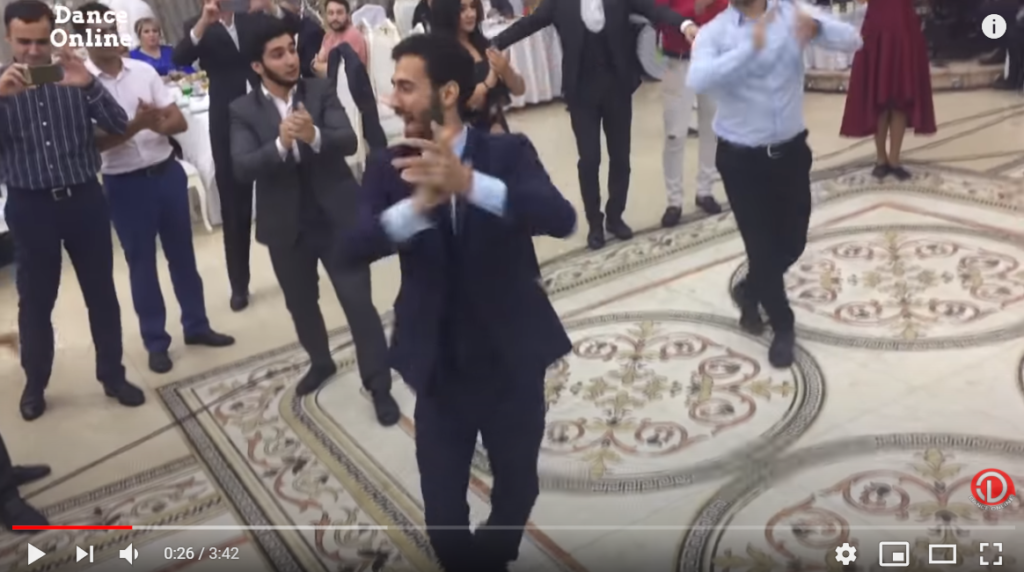18th December 2020 – Shabbat is almost here
And today we travel to discover a very isolated Jewish town: Quba, in Azerbaijan.
 Hello! How are you? I am with the mood for dancing. You’ll understand me very soon. Things to do when the pandemic is over are starting to add up and dancing with more people is one of them. Which are yours?
Hello! How are you? I am with the mood for dancing. You’ll understand me very soon. Things to do when the pandemic is over are starting to add up and dancing with more people is one of them. Which are yours?
A few weeks ago I found this video in the channel of Shloime Zionce in which he travels to this city, Quba. Let’s learn more!
.
The Jews in Caucasus
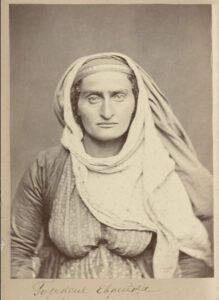 It is said that the Jews are established in the Caucasus since the capture of Jerusalem by the Babylonian king Nehuchadnezzar II, who in 586 BC seized the capital of the ancient kindgom of Judah and destroyed the city and temple.
It is said that the Jews are established in the Caucasus since the capture of Jerusalem by the Babylonian king Nehuchadnezzar II, who in 586 BC seized the capital of the ancient kindgom of Judah and destroyed the city and temple.
There is a very interesting article from Jewish News Syndicate about this topic and about the city of Quba, that is our protagonist below. I quote a little part here:
“Following this wave of Jewish settlement, others came with the Persian Empire, and throughout the Mongolian and Islamic conquest of the region. The Red Village was officially established in 1742 when the Azerbaijani Muslim leader of Quba gave permission for the Jewish community to establish its own town there without fear of persecution. Today, approximately 8,000 Jews live in Quba. The community is comprised of Mountain Jews, as well as Georgian Jews who arrived in the early 20th century, and Ashkenazi Jews who arrived in the late 19th century and during the Second World War.
All of Azerbaijan is home to 30,000 Jews in eight Jewish communities with seven synagogues. Outside of the Red Village, Jews have largely settled in the eastern city of Baku, the nearby city of Sumgayit and the Oguz district in the north.”
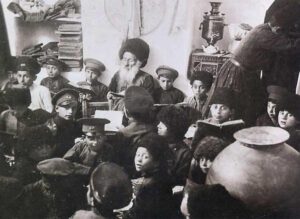 These old pictures are of public domain because of their antiquity and I got them from Wikipedia. The first is a Mountain Jewish woman from Dagestan, dated between 1870 and 1880, the second is of a class held at a primary Mountain Jewish school in Quba at the early 1920s and the third are Jewish Girls from in Dagestan in 1913.
These old pictures are of public domain because of their antiquity and I got them from Wikipedia. The first is a Mountain Jewish woman from Dagestan, dated between 1870 and 1880, the second is of a class held at a primary Mountain Jewish school in Quba at the early 1920s and the third are Jewish Girls from in Dagestan in 1913.
According this work by Edwin Seroussi et al:
“Jews spread eastwards at the time of the First Temple exile and settled in the Caucasus, Central Asia, Iran and India. In each location they created a folklore in local Jewish dialects which, musically, has strong ties with the surrounding non Jewish cultures. The folk music of these Jews has been studied only sporadically. […]
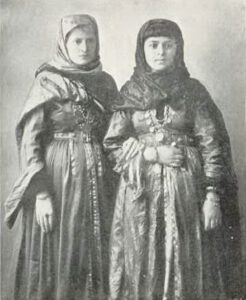 The Mountain Jews from the eastern and northern Caucasus developed a rich folksong repertory in Juhuri, their vernacular language, and in Azeri. There are two musical traditions: därbandi (northern Azerbaijan, southern Daghestan up to Khäytogh) and khäytoghi (Khäytogh, northern Daghestan, Chechen Republic and Kabardino-Balkaria). Before the Mountain Jews settled in large cities in the early 20th century they were an agricultural society that depended on the changing of seasons, and they marked the routine of nature with rituals of pagan or Zoroastrian origins which include shä‘mä vasal (spring ritual) songs and gudil gudil (songs for rain). Lullabies improvised by mothers and grandmothers while rocking babies describe their wishful thoughts regarding the future of the child. Mä’nihoy ‘ärüsi (wedding songs) comprise the bulk of the folksong repertory. They are performed with instrumental accompaniment by semi-professional singers and are influenced by the modes, rhythms and forms of Azerbaijani art and popular music.”
The Mountain Jews from the eastern and northern Caucasus developed a rich folksong repertory in Juhuri, their vernacular language, and in Azeri. There are two musical traditions: därbandi (northern Azerbaijan, southern Daghestan up to Khäytogh) and khäytoghi (Khäytogh, northern Daghestan, Chechen Republic and Kabardino-Balkaria). Before the Mountain Jews settled in large cities in the early 20th century they were an agricultural society that depended on the changing of seasons, and they marked the routine of nature with rituals of pagan or Zoroastrian origins which include shä‘mä vasal (spring ritual) songs and gudil gudil (songs for rain). Lullabies improvised by mothers and grandmothers while rocking babies describe their wishful thoughts regarding the future of the child. Mä’nihoy ‘ärüsi (wedding songs) comprise the bulk of the folksong repertory. They are performed with instrumental accompaniment by semi-professional singers and are influenced by the modes, rhythms and forms of Azerbaijani art and popular music.”
Nowadays, the city of Quba is inhabited by around 8000 Jews and it has three synagogues: the “Six Dome Synagogue” or Altı günbəz sinaqoqu or the Grand synagogue, the “Giləki” sinaqoqu or Hilaki, and two more show up in Google Maps, but I don’t find more info: “small winter” and the one in Xanukov St.
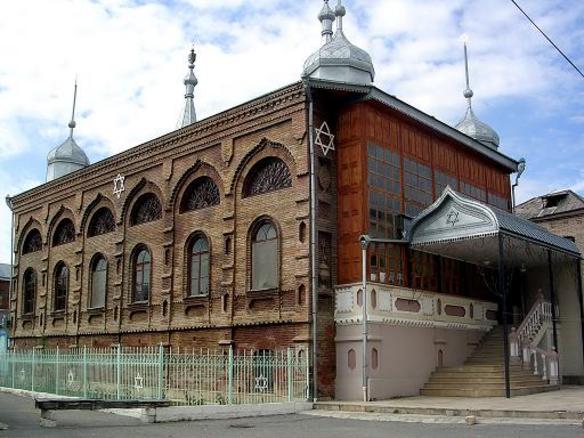
And this is the Hilaki synagogue, the picture is of public domain and I got it from here.
| Share this with a friend, right from here |
Listen to Iyr
This piece is included in the album The Music of the Mountain Jews, published in 1998 by The Jewish Music Research Centre from the Hebrew University of Jerusalem. This institution is the published of another album that has been featured before in MBS, the one of the Diwan of the Yemenite Jews. Read here that edition. This album includes recordings from the Jews from Daghestan and neighboring areas of eastern Caucasus.
As I did with the one about the Yemenites, I will share here the comments by the Centre about this piece and I will include some comments of my own. Their originals are in italic and I put in bold some terms that I will explain below:
“The Iyr also known in Juhuri as Uylov or Uylomish and in the Kabardin dialect as Ghiyr or Ghibzi is a genre found among all Turkish peoples but among the Jews appears only in the Khaytoghi tradition.”
Juhuri is the language of the Juhuro. It is a Southwest Iranian (Tatic) language of Caucasian Jews from Azerbaijan and Russia. It is also called Judeo-Tat. Some interesting facts are available on the website of the Endangered Language Alliance. I share some of them and you can learn more, here.
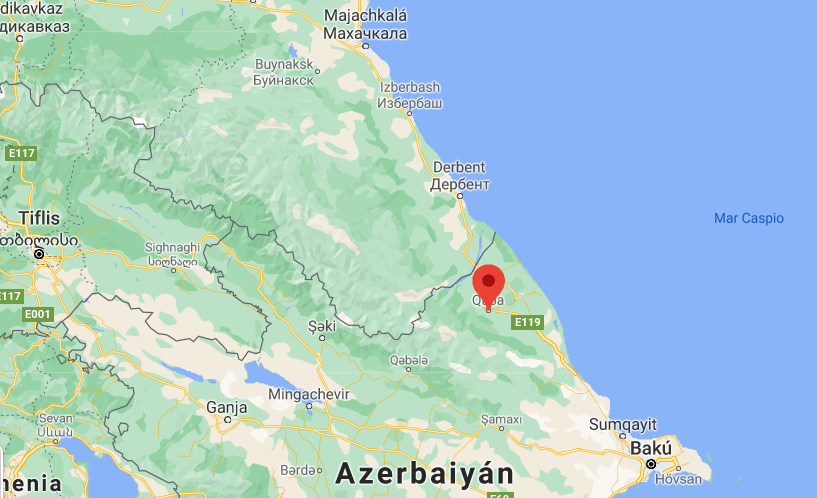 “Quba, a traditional center in Azerbaijan, is reported as having one of the few Juhuro communities where the language is still being transmitted to most children. Elsewhere the language’s future is in jeopardy from the national languages where the Juhuro live and from Russian as a lingua franca between generations and communities. […] The Theater of the Eastern Caucasus, the only Juhuri-language theater in the world, was founded in Derbent in 1923 and re-established in Israel in 2001.” Endangered Language Alliance.
“Quba, a traditional center in Azerbaijan, is reported as having one of the few Juhuro communities where the language is still being transmitted to most children. Elsewhere the language’s future is in jeopardy from the national languages where the Juhuro live and from Russian as a lingua franca between generations and communities. […] The Theater of the Eastern Caucasus, the only Juhuri-language theater in the world, was founded in Derbent in 1923 and re-established in Israel in 2001.” Endangered Language Alliance.
Listen to Juhuri spoken, here. In this video, the teacher of Juhuri Simon Mardkhayev explains the life of the Jews in the Mountains in Azerbaijan, their houses, their work, what they eat, how they studied through the memories of his own life. It includes English subtitles.
Quba is also called Krasnaya Sloboda (Красная Слобода) in Russian and Gyrmyzy Gasaba (Qırmızı Qəsəbə) in Azeri, and it means the red city. Fancy a trip to Quba? Enjoy this video of an aereal trip thourought the city:
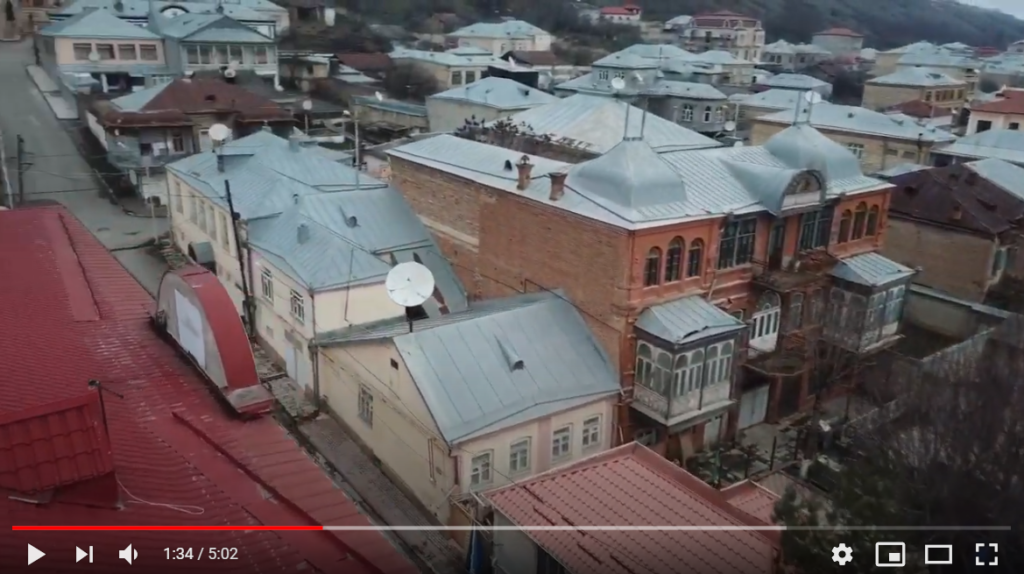
“These are long complex compositions usually consisting of three parts. The opening is a free polyphonic introductory section in very slow tempo based on motifs from well-known songs. It is followed by a short part which alludes to rhythms from the upcoming sections. The music then abruptly returns to the free rhythm improvisation of the opening section. The third part consists of several melodies each in a tempo faster than the previous one ending with a number of Lezginka dances.”
About Lezginka dance, according to Britannica, “It is a male solo dance (often with a sword) and also a couple dance. The man, imitating the eagle, falls to his knees, leaps up, and dances with concise steps and strong, sharp arm and body movements. When the dance is performed in pairs, couples do not touch; the woman dances quietly as she regards the man’s display.”
 |
 |
With all this information, now you are ready!!! ?
Click the picture to listen to the recording:
I hope you’ll like it and, if so, feel free to share it and invite your friends to join us.
It is as symple as sending … this link to sign up
Shabbat Shalom.
Araceli Tzigane | Mapamundi Música

